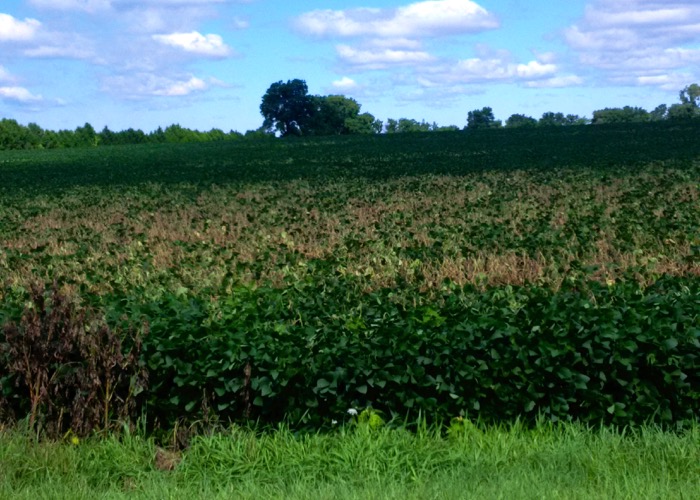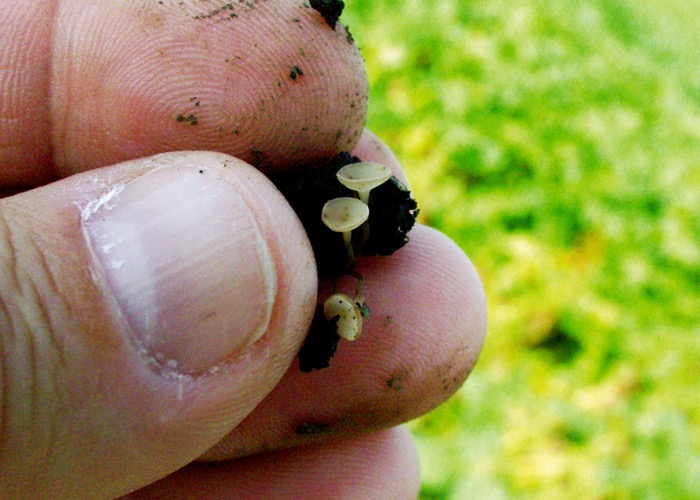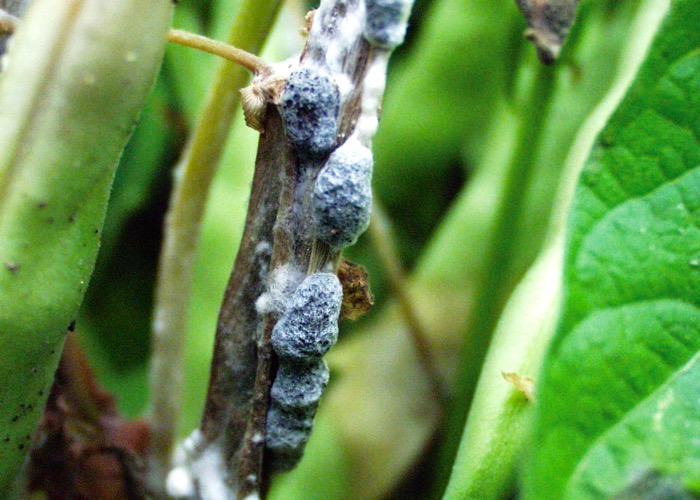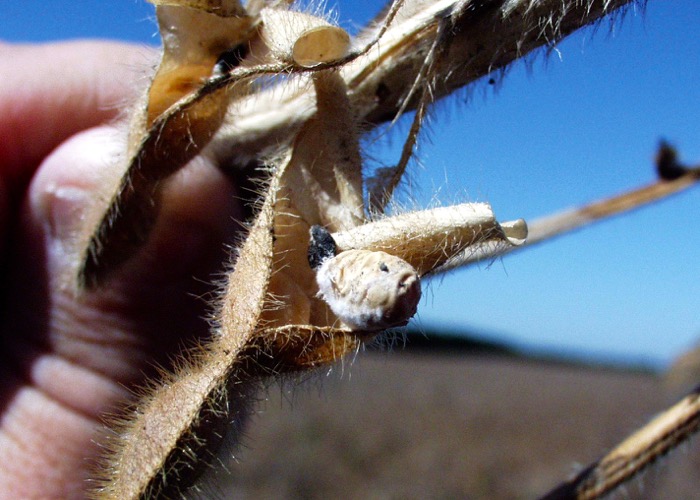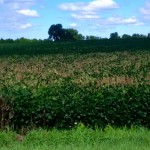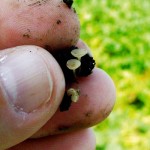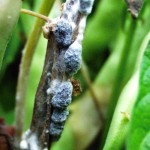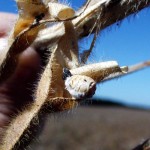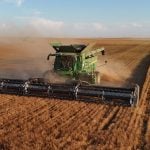Figure 2
Sclerotia in the soil will produce mushroom-like structures called apothecia that eject spores onto the soybean plant.
Photo: OMAFRA
Figure 3
After the spores inoculate the plant, the fungal pathogen grows and consumes plant nutrients, which cause the stems to girdle. This kills any plant tissue above and results in injury as shown in Figure 1.
Photo: OMAFRA
Figure 4
The black sclerotia, as seen here attached to a soybean seed within the pod, which when reintroduced to the soil will start its life cycle all over again.
Photo: OMAFRA
In 2014, we saw a lot of white mould in the Ontario soybean crop, so I asked Albert Tenuta, our provincial field crops pathologist (on Twitter @alberttenuta) for the best way to minimize this disease for 2015 and beyond.
Factors Favouring White Mould
1. High yield potential crop/field
2. Field history of white mould
3. Susceptible variety
4. Short soybean rotation
5. Dense canopy — high plant population, narrow rows and early planting
6. Poor weed control (which provides hosts)
Read Also

Could crop sharing be a viable option for your farm?
Crop sharing could be a good option for young and beginning farmers.
IPM (integrated pest management) for White Mould Management
1. Keep good field records of disease levels
2. Variety selection
a. Best available level of tolerance
b. Appropriate maturity
c. Upright, non-bushy with good lodging tolerance
3. Cultural practices such as:
a. Reduce plant populations and increase row width
b. Rotate with non-host crops (two to three years of non-hosts such as corn and wheat)
c. Reduce tillage but avoid soybeans on soybeans, which creates a high-risk situation
3. Fungicides — target fields at risk (above)
a. Many chemical/biological options
Have a question you want answered? Hashtag #PestPatrol on Twitter to @cowbrough or email Mike.

